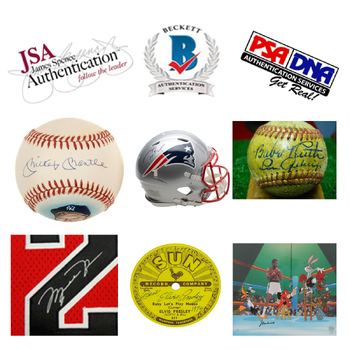Forensics Handwriting Analysis - Autograph Authentication
- Zip
Description
Over the years, the attraction to celebrities and sports figures has grown exponentially, and as such, so has the demand for their autographs. As a matter of fact, autograph collecting has turned out to be a multi-billion dollar a year industry. Some individuals have their signatures sell for prices in excess of $1,000 to $10,000! With prices this high and an industry with this much popularity, many individuals have decided to forge these signatures in an attempt to make a quick buck. It is even estimated that somewhere in the range of 90%-95% of autographs from some individuals are fakes.
Below are some examples of high profile individuals whose autographs go for big money, but are also found to be largely forged in the marketplace.
Joe DiMaggio - $150 +
Muhammad Ali - $250 +
Mickey Mantle - $500 +
Elvis Presley - $1,000 +
Tom Brady - $1,300 +
Michael Jordan - $1,500 +
Neil Armstrong - $2,500 +
Babe Ruth - $10,000 +
Included in this lesson:
- 8 different stations for you to copy, laminate, or post to your Google Classroom of the above mentioned celebrity autographs. Each station starts with an explanation of how to correctly identify each signature. It is then followed up with examples of known forgeries and how to detect them. It ends with 4 samples that the students have to examine to determine if they are real or fake. (MS Word format, pdf format)
- Assessment Sheet for the students to fill out (MS Word format)
- Assessment Sheet Answer Key for the students to fill out (MS Word format)





